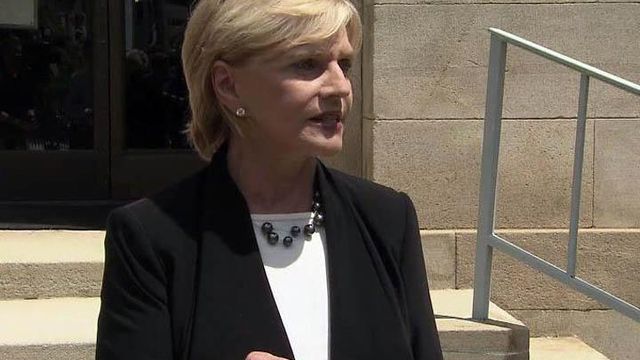Fact Check: Which way on school spending?
Gov. Bev Perdue's says there are "less dollars" for public education in the House budget proposal than last year. Strictly speaking, this isn't true but it's not totally wrong either.
Posted — UpdatedPerdue and Republican lawmakers have been arguing for most of the past 18 months over whether the General Assembly is putting enough money into education, particularly K-12 public schools. Perdue's announcement on sweepstakes brings argument to the foreground again.
"That is not accurate, no," said Rep. Harold Brubaker, R-Randolph, the senior budget chairman in the House. He said that the state is actually spending more on education than last year and improved upon budgets written by Democrats in 2010.
"I can't account for the lack of ability to do math by the folks down the street," Brubaker said of Perdue's assertion.
Is school spending up? It depends
So who is right? It depends on whether you're just looking at state spending, overall education spending or an even broader education picture.
It shows that the "ratified budget" Perdue was talking about spends $7.444 billion and the House proposal for next fiscal year would spend $7.692 billion.
That's an increase of $248 million. So as far as actual state spending, Perdue is wrong.
And, in fact, the increase in state spending proposed by the House correlates roughly to the amount needed to replace the expiring federal money.
However, Perdue's staff says the budget doesn't get all the way there.
“After the legislature’s cuts, K-12 schools in North Carolina are receiving $7.72 billion this year," said Perdue spokeswoman Chris Mackey. "$258 million of that is federal EduJobs money that disappears after this year. Under the House budget for next year our schools will receive even less money than this year – $7.69 billion.”
Here's little bit more precise math: $258 million in EduJobs money plus $7.444 billion in state spending is $7.702 billion, which would be $10 million more than the $7.692 billion the state would spend this year.
Either way, the difference ranges from $10 million to $30 million. Viewed that way, yes, the proposed House budget spends less if EduJobs is taken into account, but just barely. In the context of $7.7 billion in education spending, and total state budget worth $20.2 billion across all areas, $30 million realistically amounts to a wash.
However, Perdue's staff points to something else the governor said Thursday.
Per-pupil spending keeps up, teacher pay does not
“The number of children showing up at the schoolhouse door is increasing. The demands on teachers are growing," Perdue said in her written statement formally announcing the sweepstakes proposal.
The House money report itself projects 11,802 more students will enroll in North Carolina public schools in 2012-13 than in the year just ended. Perdue says this means schools will have to educate more students with the same amount of dollars, something that amounts to a cut.
Asked about this, Brubaker points to a line item in the House budget for average daily members, or ADM. It is an allotment of money each school system gets based on the number of pupils they have.
"The ADM is basically level," Brubaker says. Brubaker correctly points out that ADM per pupil is basically the same in the House budget proposal as it is for the current fiscal year.
So how is it that the state is spending virtually the same on education but keeping up with ADM? Through technical changes in the budget. One of the biggest is an $85.6 million cut due to a dip in average teacher salary.
"That's an unfortunate, but accurate, indication as to what's happening in the schools," said Brian Lewis, a lobbyist with the North Carolina Association of Educators, a group that advocates on behalf of public school teachers. Older teachers, more experienced teachers are retiring or moving to other jobs. If schools are able to replace people in those positions, the teachers they hire are often younger – and paid less – than their longer-serving counterparts.
But ADM is a budget concept most relevant inside the halls of the General Assembly. Perdue is arguing that even if funding is holding steady, the public schools would have to educate significantly more kids with virtually the same amount of money.
In her budget proposal, Perdue put more money into several education areas by raising the state sales tax by three quarters of a percentage point. Republicans like Brubaker said a tax increase would hurt the overall economy.
"Given the premise we're not going to raise taxes, we had to work with the money we had," he said. Given that, he said, schools fared well.
Does does Perdue's claim that there are "less dollars" in public education this year than last add up?
- If you look at just state spending: NO.
- If you look at state spending plus federal EduJobs money: YES, but barely. The difference is small and really amounts to a wash.
- If you look at the total amount of money in the system versus the total number of students served: YES, although both Republican budget writers and Perdue can point to numbers that support their claims on per pupil spending.
One final note: the Senate is due to release its version of the budget Sunday night and could send it to Gov. Perdue by the end of the week.
• Credits
Copyright 2024 by Capitol Broadcasting Company. All rights reserved. This material may not be published, broadcast, rewritten or redistributed.






